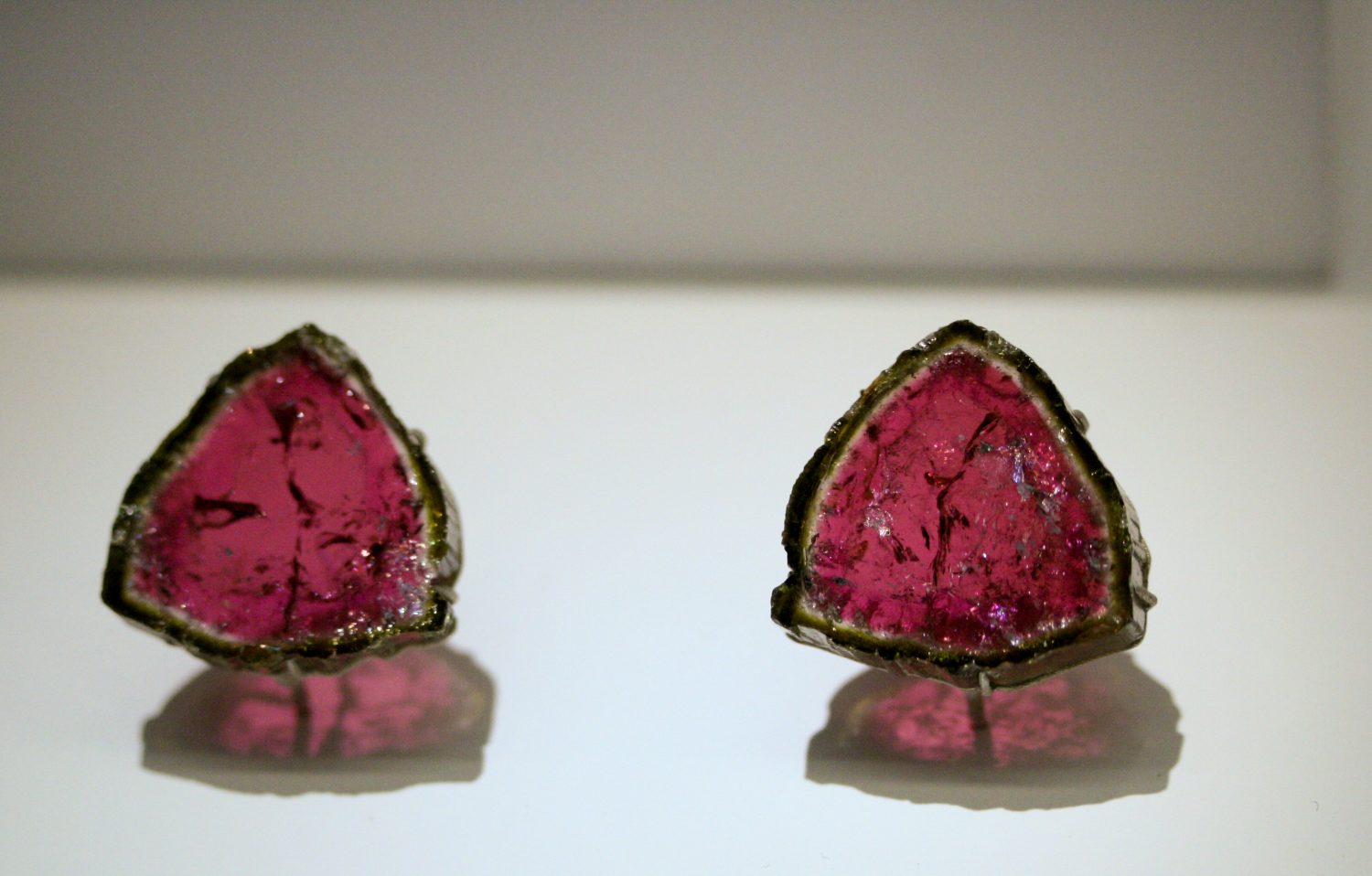Some of the most beautiful gemstones in the world belong to a group of minerals called “ring silicates.” Like the name suggests, these minerals all have the elements silicon and oxygen arranged in a ring-like structure at the atomic level. Tourmaline is one of the most sought after minerals in this group for its use in both industry and jewelry. It is distinctive because of its elongated crystal structure with heavy striations, and its ends (called terminations) have the shape of rounded triangles. Tourmaline is not one mineral; rather, it is the name given to a group of minerals that have very similar chemical compositions.
The three main members of the tourmaline group are schorl, elbaite and dravite. Schorl is an opaque, black variety and is the most common type of tourmaline. Dravite is dark brown, and elbaite can be almost any color, even multicolored. Elbaite is the variety of tourmaline that is most often used in jewelry because of the incredible colors it can exhibit. There are numerous names given to different elbaite varieties based on its color. Rubellite, for example, is the pink variety of elbaite, and indicolite is the blue variety, but there are many more. Because of chemical zoning, some elbaite crystals can have striking multicolored designs. One of the most unique minerals in the entire world is a result of this. Appropriately named, watermelon tourmaline is pink on the inside and bright green on the outside, making for an unbelievable specimen you would think could not form in nature.
Along with tourmaline, other gemstones belonging to the ring silicate family include: emerald, aquamarine, morganite, heliodor and dioptase. You can see exquisite examples of these minerals all together in a new display at the Dice Mineralogical Museum on the first floor of North Hall!







